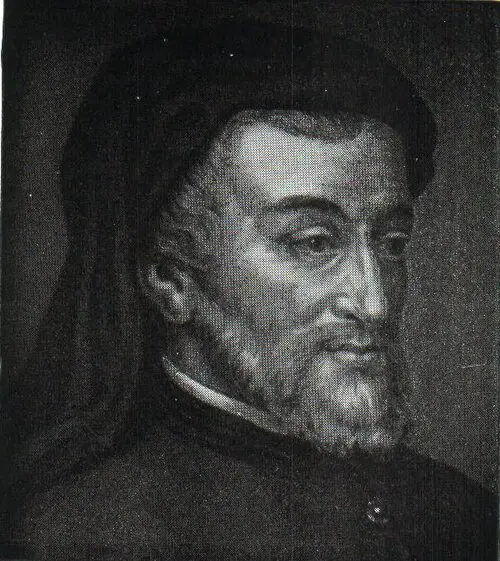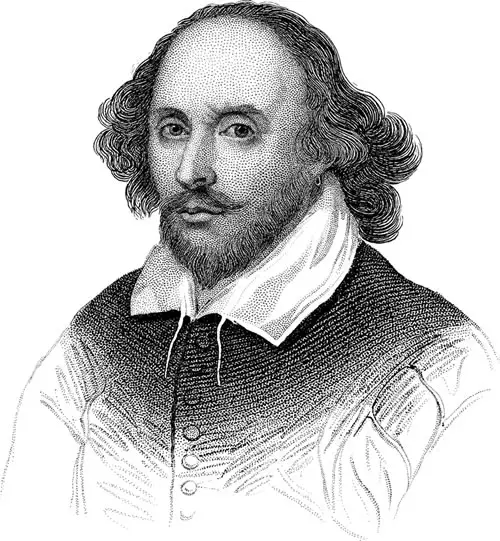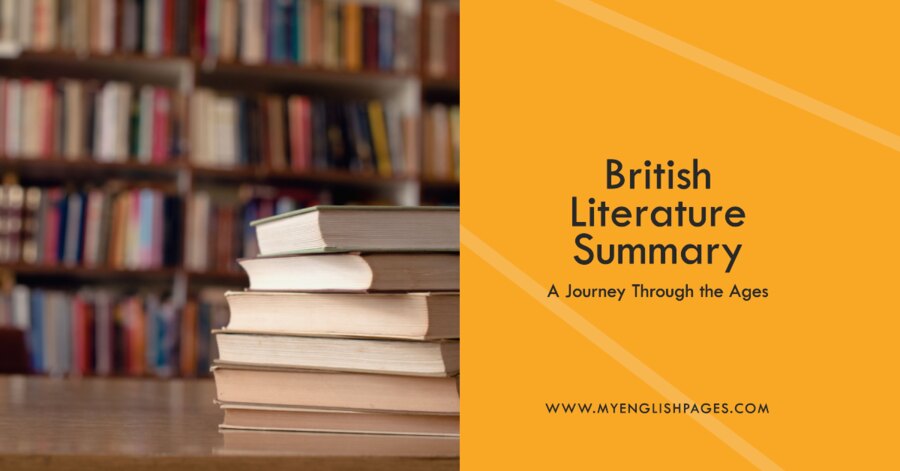Table of Contents
British literature is one of the world’s richest and most influential literary traditions. Spanning over a thousand years, it reflects the evolving language, culture, and history of the British Isles.
This British literature summary offers a concise overview of its major periods, themes, and iconic writers—from Beowulf to Shakespeare, and from the Romantics to contemporary voices.
You may also want to explore American literature!
British Literature Summary

1. Old English (Anglo-Saxon) Period (c. 450–1066)
The Old English period marks the beginning of British literature. It was a time when literature was primarily oral and focused on heroic tales and religious themes. The language of this period, Old English, is very different from modern English and can be difficult to understand without specialized study.
The most significant work from this era is the epic poem Beowulf, which tells the story of a hero who battles the monster Grendel, Grendel’s mother, and later a dragon. This work highlights the values of bravery, loyalty, and honor.
Other notable texts include The Dream of the Rood, a religious poem presenting the crucifixion from the cross’s perspective, and the Anglo-Saxon Chronicle, a historical record kept by monks.
Key Features:
- Oral storytelling tradition
- Pagan and Christian elements
- Themes of heroism and fate
2. Middle English Period (1066–1500)

Frédéric, CC BY-SA 3.0 Creative Commons, via Wikimedia Commons
Following the Norman Conquest of England in 1066, French and Latin heavily influenced the English language. Middle English literature emerged, characterized by a blend of old traditions and new influences.
The most famous writer of this period is Geoffrey Chaucer, whose Canterbury Tales is a collection of stories told by pilgrims traveling to Canterbury Cathedral. Each tale reflects different aspects of medieval society and offers a mix of humor, morality, and satire.
This period also includes religious and allegorical works such as Piers Plowman by William Langland and Sir Gawain and the Green Knight, a chivalric romance.
Key Features:
- Development of a more standardized English
- Focus on chivalry and courtly love
- Rise of allegorical and narrative poetry
3. The Renaissance and Elizabethan Era (1500–1660)

This era witnessed a revival of classical learning and a flourishing of the arts. The invention of the printing press allowed for the wider dissemination of literature.
The most iconic figure of this time is William Shakespeare, whose plays such as Romeo and Juliet, Hamlet, Othello, and Macbeth are still widely studied and performed. His works explore themes like ambition, jealousy, love, and betrayal.
Other notable writers include Christopher Marlowe, known for Doctor Faustus, and John Donne, a metaphysical poet who wrote complex and emotional poetry.
Key Features:
- Influence of classical Greek and Roman texts
- Flourishing of drama and poetry
- Themes of humanism, exploration, and individualism
4. The Restoration and 18th Century (1660–1798)
Following the tumultuous English Civil War (1642–1651), which saw conflict between Royalists and Parliamentarians, England experienced a brief period of republican rule under Oliver Cromwell, known as the Interregnum. The monarchy was eventually restored in 1660 when Charles II ascended the throne, marking the beginning of the Restoration era.
This political shift brought about a renewed interest in stability, hierarchy, and classical ideals. Consequently, literature began to emphasize reason, science, and order, aligning with Enlightenment thought. Satire became a dominant form, as writers such as John Dryden and later Jonathan Swift and Alexander Pope used wit and irony to critique politics, religion, and societal norms.
John Milton‘s Paradise Lost, an epic poem about the fall of man, reflects both religious devotion and political commentary. Jonathan Swift‘s Gulliver’s Travels and Alexander Pope‘s The Rape of the Lock are examples of sharp wit and social criticism.
The 18th century also saw the rise of the novel, with authors like Daniel Defoe (Robinson Crusoe) and Samuel Richardson (Pamela) paving the way for modern prose fiction.
Key Features:
- Rise of satire and prose fiction
- Emphasis on logic, reason, and social norms
- Emergence of the novel as a literary form
5. Romantic Period (1798–1837)
Romanticism was a reaction against both the Industrial Revolution and the rationalism of the Enlightenment. The Industrial Revolution brought rapid urbanization, mechanization, and a shift from agrarian life to factory-based economies, leading to social dislocation, environmental degradation, and a perceived loss of spiritual and emotional depth.
In response, Romantic writers championed emotion over reason, celebrated the beauty and power of nature, and emphasized individual imagination and subjectivity. They viewed the natural world as a source of truth and inspiration, countering the mechanistic worldview that industrialization promoted. This period marked a turn inward, focusing on personal experience, the sublime in nature, and the inner workings of the human mind.
William Wordsworth and Samuel Taylor Coleridge published Lyrical Ballads, a landmark collection that set the tone for Romantic poetry. Lord Byron, Percy Bysshe Shelley, and John Keats contributed richly emotional and philosophical works exploring beauty, freedom, and the sublime.
The Gothic novel also gained popularity during this period, with works like Mary Shelley‘s Frankenstein and Emily Brontë‘s Wuthering Heights appearing toward the end of the Romantic era.
Key Features:
- Celebration of nature and emotion
- Interest in the supernatural and exotic
- Focus on the individual and imagination
6. Victorian Era (1837–1901)
The Victorian period was marked by the reign of Queen Victoria and a time of industrial growth, empire, and social change. Literature often addressed moral issues, class disparities, and the role of women in society.
Charles Dickens highlighted the struggles of the poor in novels like Oliver Twist and Hard Times. Charlotte Brontë and George Eliot explored gender and societal expectations. Thomas Hardy‘s novels expressed a deep pessimism about modern life.
Oscar Wilde brought wit and satire with plays like The Importance of Being Earnest, while Alfred, Lord Tennyson and Robert Browning contributed to Victorian poetry.
Key Features:
- Social critique and reform
- Focus on morality and duty
- Popularity of serialized novels
7. Modern and Postmodern British Literature (1901–Present)
The 20th century ushered in sweeping cultural, political, and technological changes, reflected in the emergence of Modernist and Postmodernist movements in British literature. Each phase brought unique innovations and themes.
Modern British Literature (1901–1945)
Modernism emerged as a reaction to the upheavals of industrialization and the devastation of World War I. Writers sought to break away from traditional forms and narratives, experimenting with language and structure to capture the fragmented reality of modern life.
Key Modernist Writers:
- Virginia Woolf: Pioneered stream-of-consciousness writing in works like Mrs Dalloway and To the Lighthouse, exploring themes of time, consciousness, and gender.
- T.S. Eliot: His poem The Waste Land exemplified the disillusionment of the post-war generation, using dense allusion and fragmented structure.
- James Joyce: Known for Ulysses, which redefined the novel with its linguistic innovation and psychological depth.
Themes and Features of Modernism:
- Fragmentation and alienation
- Loss of faith in traditional institutions
- Experimentation in narrative form and perspective
- Focus on the inner life of characters
Postmodern British Literature (Post-1945)
Postmodernism developed in the aftermath of World War II and responded to the complexities of the postcolonial, post-industrial world. It often features irony, pastiche, metafiction, intertextuality, and a deliberate blurring of the boundaries between high art and popular culture.
Key Postmodern Writers:
- Julian Barnes: He is famous for writing incisive and thought-provoking literature. His works, The Sense of an Ending and Flaubert’s Parrot, have won him praise from critics.
- Alasdair James Gray: Gay was a Scottish author and visual artist best known for his debut novel, Lanark, which is considered a cornerstone of Scottish literature.
- Angela Carter: Reimagined fairy tales and myths in works like The Bloody Chamber, emphasizing gender, power, and storytelling.
- George Orwell: Though sometimes associated with Modernism, his dystopian novels like 1984 and Animal Farm also anticipate Postmodern themes of surveillance, power, and truth.
Themes and Features of Postmodernism:
- Playfulness and parody
- Metafiction and self-referentiality
- Cultural hybridity and postcolonial identity
- Questioning of grand narratives and objective truth
Today, contemporary British literature continues to evolve, shaped by globalization, digital culture, and diverse voices that reflect the richness of modern British society.
The 20th century brought immense change. World wars, the decline of empire, and rapid technological advances shaped the literature of this time.
Modernist writers like Virginia Woolf, T.S. Eliot, and James Joyce experimented with narrative style, stream of consciousness, and structure. Their work questioned reality, identity, and perception.
Post-war literature tackled existential themes and reflected disillusionment. George Orwell wrote dystopian classics like 1984 and Animal Farm, critiquing authoritarianism.
Contemporary British literature is diverse and global, featuring authors like Zadie Smith, Salman Rushdie, and Hilary Mantel, who explore identity, history, and culture in a multicultural society.
Key Features:
- Literary experimentation and innovation
- Exploration of identity and post-colonial themes
- Diverse voices and global perspectives
FAQs
What are the main points of British literature?
British literature spans centuries and includes various literary periods, each reflecting historical, social, and cultural changes. Key points include:
– The evolution of the English language (from Old English to Modern English)
– Major literary movements such as the Renaissance, Romanticism, and Modernism
– Influential authors like William Shakespeare, Geoffrey Chaucer, and Virginia Woolf
– Themes such as heroism, morality, individualism, class, identity, and social change
– The development of literary forms including epic poetry, drama, the novel, and satire
What are the main characteristics of British literature?
Some defining characteristics of British literature across periods include:
– Rich use of language and literary devices (e.g., irony, symbolism, imagery)
– Exploration of human nature, morality, and society
– Historical and political context shaping themes and style
– Influence of religion, class structure, and national identity
– A blend of tradition and innovation in storytelling and form
Who is the father of English Literature?
Geoffrey Chaucer is widely regarded as the father of English literature. His most famous work, The Canterbury Tales, helped establish English as a literary language at a time when Latin and French were dominant in English literary circles.
How old is British literature?
British literature is over 1,500 years old, beginning around the mid-5th century with Old English (Anglo-Saxon) texts like Beowulf.
What is the difference between British literature and American literature?
While both are written in English, British and American literature differ in context, themes, and historical background:
– British literature often reflects the long, complex history of the UK, including monarchy, empire, and class structure.
– American literature focuses on themes like freedom, the American Dream, race relations, and frontier life.
– British works frequently deal with issues of tradition and social hierarchy, whereas American literature tends to highlight individualism and innovation.
– Language use, cultural references, and idiomatic expressions also vary due to regional differences.
Final Thoughts
This British literature summary traces a fascinating journey through centuries of storytelling. From ancient epics to contemporary novels, each period has shaped the language and themes we continue to explore today. If you are a student, teacher, or curious reader, you may want to dive into British literature because it is both an educational and enriching experience.
More British Literary Resources
Interested in Shakespeare’s work?
- William Shakespeare’s Short Biography
- Best Comedies Written by Shakespeare
- Top 10 Dramas of Shakespeare
- Sonnet 98 – William Shakespeare
- The Tragedy of Macbeth by William Shakespeare
- Exploring the Themes of Romeo and Juliet by William Shakespeare
- Shakespearean Insults
- Quotes by William Shakespeare
- Topics for EFL and ESL Students: William Shakespeare
Johnathan Swift:
Content Related to Christopher Marlow:
Virginia Woolf:
George Orwell:
Charlotte Bronte:
Charles Dickens:
- David Copperfield by Charles Dickens
- Great Expectations by Charles Dickens
- Bleak House by Charles Dickens
- A Short Biography Of Charles Dickens
- Quotes by Charles Dickens
Other Resources:


